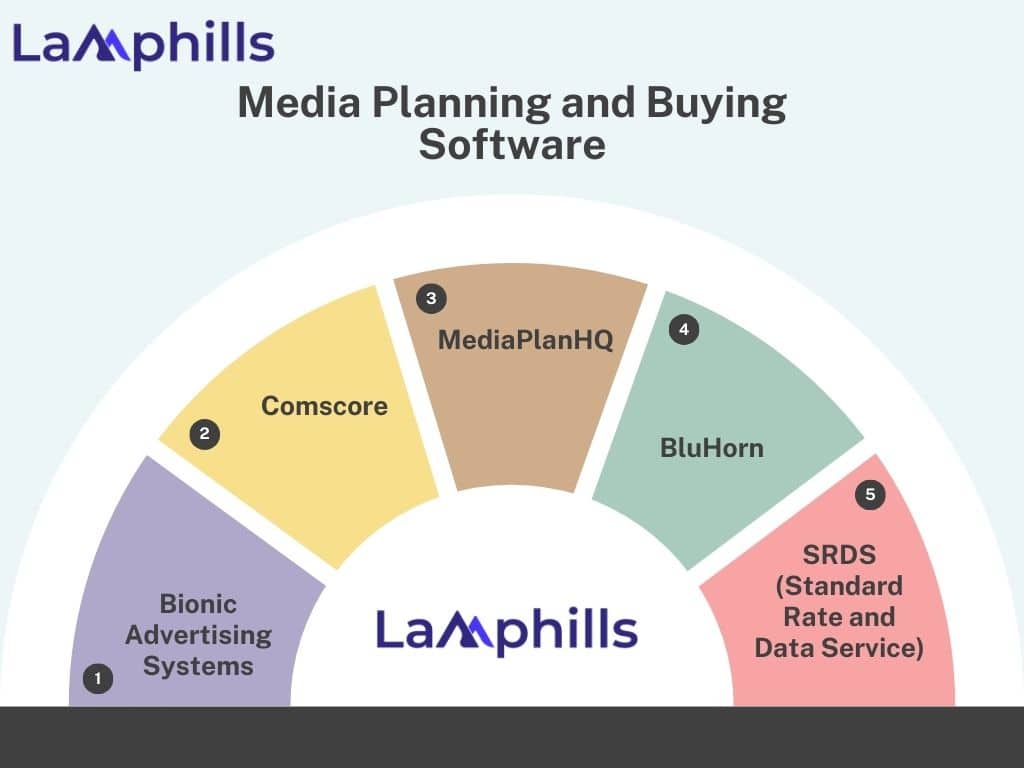In today’s fast-paced advertising world, media planning and buying are critical in ensuring that a brand’s message reaches its target audience effectively. Both processes work hand in hand to deliver successful advertising campaigns, but they differ significantly in their functions and execution.
In this article, we’ll explore the key differences between media planning and buying, delve into digital media planning and buying, discuss the role of media planning and buying agencies, and touch on the importance of media planning and buying software. Additionally, we’ll outline some best practices to help advertisers make the most of these processes. Let’s get started!
Key Points
- Media planning focuses on research, audience segmentation, and strategy creation, while media buying is about executing the plan by purchasing ad spaces and ensuring the ads run smoothly.
- Digital media buying is rapidly growing, involving platforms like social media, websites, and mobile apps. Cost metrics like views, clicks, and customer actions determine costs, making it highly interactive.
- These agencies handle all aspects of purchasing ad spaces, leveraging industry expertise to secure better deals and prime placements.
- Tools like Bionic, Comscore, MediaPlanHQ, BluHorn, and SRDS help automate and streamline the media planning and buying process, offering better project management, performance tracking, and data analytics.
What Is Media Planning and Buying?

Credit; peoplecreations
Media planning and buying are two key steps in advertising, and they go hand in hand to ensure a campaign runs smoothly. Besides purchasing the ad space, media buyers also ensure the ads go live on time, manage bidding limits, and track important metrics to ensure the campaign stays on track without overspending.
Media Buying vs. Media Planning
When it comes to advertising, media planning and media buying are two critical steps that work together to create successful campaigns. While they might sound similar, they each serve a unique purpose. Let’s break down these two processes, how they differ, and why they’re important.
Media Planning

Credit: wayhomestudio
Media planning is the first step in building a strong marketing campaign. It’s all about research, analysis, and decision-making to determine how and where to deliver your message to the right people. This is where the foundation for the entire campaign is set. Without a solid media plan, the campaign could miss its mark.
Key parts of media planning include:
- Identifying the Target Audience: The first thing is to know who the campaign is for. Who is most likely to be interested in the product or service? By looking at demographics (age, gender), psychographics (lifestyle, values), and behaviors, media planners build a profile of the ideal audience.
- Researching the Market: Understanding market trends, the competition, and how consumers behave helps planners choose the right channels for the campaign. It’s all about getting the message in front of the right people at the right time.
- Selecting Channels: From TV and radio to digital platforms and social media, media planners choose the best channels to reach the audience. The choice depends on where the audience spends their time and what will get the most impact.
- Allocating the Budget: With the marketing team, media planners decide how much of the budget should go to each channel. The goal is to spread the budget in a way that gets the best reach without overspending.
- Building the Campaign Strategy: Finally, media planners decide when and where the ads should run, how often they’ll appear, and in which formats. It’s all about timing and frequency to get the most out of each ad.
Download this comprehensive Media Planning Checklist to walk you through each essential step of media planning, providing a structured approach for successful campaigns.
Media Buying

Credit: Freepik
Once the media plan is set, it’s time for the next step: media buying. This is where the actual execution of the plan happens. Media buying is about purchasing ad space or time on the selected channels, ensuring the ads reach the right people at the right time without going over budget.
Here’s what media buying involves:
- Negotiation: Media buyers are skilled negotiators. They work with ad vendors to get the best deals on ad placements, ensuring they spend the budget wisely.
- Ad Placement: Based on the media plan, media buyers ensure the ads are placed in the best spots to grab attention. This could be prime-time TV slots, popular digital platforms, or high-traffic websites.
- Ad Trafficking: Media buyers also work closely with the creative team to deliver the right ad materials to media outlets. This coordination ensures the ads run smoothly and look great.
- Managing the Budget: A media buyer’s most important job is ensuring the campaign stays within budget. They track spending and adjust the plan to get the best results without overspending.
This comprehensive media buying checklist will walk you through the essential steps of media buying and provide a structured approach for successful campaigns.
Media Planning vs. Media Buying: How They Work Together
While media planning and media buying are different, they’re closely connected. You can think of media planning as setting the direction and media buying as executing the plan. A strong media plan provides the roadmap for buying ad space. Without media buying, though, the plan wouldn’t come to life.
Which one is more important? It’s like asking which wing of a plane is more important. They’re both essential. Media planning ensures the campaign targets the right audience with the right message. Media buying turns that plan into reality by securing prime ad placements with the most impact.
In the world of advertising, both media planning and media buying play vital roles. They’re two sides of the same coin, working together to make campaigns successful. The better they work in sync, the more effective the campaign will be.
Digital Media Planning and Buying
One of the fastest-growing areas in media buying today is digital media buying. It’s amazing how internet advertising has become essential to modern business and everyday life. Whether browsing websites, scrolling through social networks, or using mobile apps, digital ads are everywhere, connecting directly with their target audience.
The best thing about digital advertising is that it engages people where they spend their time online. When businesses rent ad space, like banners on social media, they pay for a set period, as agreed upon in a contract. The price of this ad space largely depends on how many of the right people in the target audience visit the site.
But that’s not all. The cost also depends on clicks from other platforms, the number of ad views, and, most importantly, the actions potential customers take, like clicking on the ad or making a purchase. It’s all about interaction. On the other hand, radio and TV ads are priced differently. They charge by the minute, and on TV, the cost depends on how popular the channel is, measured by its ratings.
For outdoor ads like billboards or ads on buses, the cost is influenced by things like the location, the size of the billboard, and even the materials used to make it. Print media, like magazines and newspapers, charge more if they’re in major regions or the publication is well-known.
Media Planning and Buying Agency
A media buying agency is a company that businesses hire to handle all the work related to buying ad space. Instead of doing this in-house, companies rely on these agencies to take over the process, saving them time and ensuring that the ads are placed effectively.
Regarding media planning and buying agencies, quite a few stand out for their unique approaches and specialties. These agencies handle everything from selecting the right ad spaces to negotiating the best prices, ensuring businesses get the most out of their advertising budget.
Let’s look at some of the top agencies:
#1. AJ Marketing
AJ Marketing is a well-known media buying agency that has made a name for itself in influencer marketing. They’re strong in social media, using their expertise to create campaigns that resonate with today’s digital audiences. What sets them apart is their ability to tap into the power of influencers and social platforms to boost brand visibility and engagement.
#2. ProMedia
ProMedia takes a more data-driven approach to media buying. They’re all about direct response marketing, meaning they focus on getting immediate consumer reactions, whether clicks, sign-ups, or purchases. Their goal is to maximize return on investment (ROI), and they’re pretty innovative in finding cost-effective ad placements that deliver results.
#3. Hotspex Media
Hotspex Media is another big player in this space, based in Canada. They offer various media planning and optimization solutions, helping businesses fine-tune their ad strategies. What I like about Hotspex is their focus on both planning and ongoing optimization, making sure campaigns don’t just launch successfully but continue to perform well throughout.
#4. EXL Media
EXL Media has been around since 1994 and combines a large agency’s experience with a smaller firm’s personal touch. They handle everything from strategic media planning to negotiating, tracking, and adjusting campaigns. Their strength lies in their ability to navigate digital and traditional media channels, offering a well-rounded approach to advertising.
#5. Algorithm Media
In Nigeria, algorithm media has been making waves since 2016. Known for their innovation and speed, they offer a full 360° media planning and buying service. They even launched partnerships with major global agencies like Mindshare and MediaCom, which speaks to their growth and influence in the industry.
#6. MuteSix
Lastly on my list, there’s MuteSix, based in Los Angeles. They’re a creative studio offering media planning and buying, video production, and social media management. With over 150 employees, MuteSix has the scale to handle large campaigns while still offering creative and effective solutions for their clients.
Each agency brings something unique: influencer marketing, data-driven strategies, or a mix of creative and traditional ad planning. Depending on the business’s needs, a media buying agency can help them craft and execute the perfect campaign.
How Does this Media Planning and Buying Agency Work?
First, the agency looks at the client’s strategic goals and what the business wants to achieve with the campaign. Then, they take the creative content, like the ads or visuals the client has prepared, and find the best places to show them. Depending on the campaign’s strategy, this could be anything from online platforms, social media, or even TV and radio spots.
Why Do Companies Use Media Buying Agencies?
Well, these agencies specialize in negotiating the best prices for ad space, so businesses get more bang for their buck. They also have industry knowledge and relationships with media vendors, which helps them secure prime ad spots that a company might not be able to get on its own.
For businesses, using a media buying agency can be a smart move. Instead of figuring out where to put ads and negotiating deals, they can focus on their main operations while leaving the ad placement to the experts. The agency takes the stress out of the process, ensuring the campaign aligns with the company’s goals and reaches the right audience at the right time.
Media Planning and Buying Software
Here’s a list of top Media Planning and Buying Software:

#1. Bionic Advertising Systems
This all-in-one platform automates the entire media planning and buying process. It covers everything from media investment management to project management and performance monitoring, making it a comprehensive solution for marketers.
#2. Comscore
Known for its media measurement and analytics, Comscore helps buyers and sellers evaluate their media plans across platforms. It’s a trusted tool for analyzing display, video, and app content, ensuring you get the data you need to create the best media strategies.
#3. MediaPlanHQ
This online software is perfect for marketing teams looking to organize and track their media plans efficiently. It streamlines advertising and agency operations, optimizing workflow and ensuring smooth coordination across the board.
#4. BluHorn
If programmatic buying is your focus, BluHorn integrates data from social media and ad networks into one place, making programmatic media buying easier and more effective.
#5. SRDS (Standard Rate and Data Service)
Standard Rate and Data Service is Offered by Adwanted Group. SRDS is great for media planners and buyers who want to streamline their workflow. It helps them access a wide range of data points, ensuring their media campaigns are efficient and successful.
Related Post
How to Become a Media Buyer in Nigeria in 2024
The Best Media Planning Tools for Advertisers and Brands
A Comprehensive Guide to Digital Media Buying in 2024






